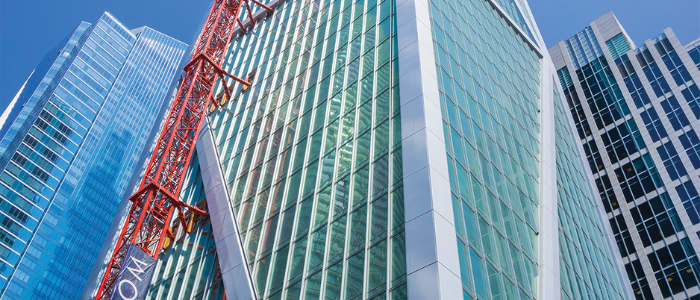
The population density, the volumes of traffic, and the vertical distances in a skyscraper demand a more detailed and focused investigation, planning, and delivery cycle for the skyscraper emergency evacuation system plan. Challenges such as the safety of disabled residence or employees and visitors are increased. Under normal circumstances and with a good evacuation plan, it should only take only a few minutes to evacuate one of these basic 5 or 6-story buildings. Thus, when one talks about skyscrapers or high-rise buildings, it means buildings over 10 stories, their height made possible by the invention of the elevator. The majority of the people will have reached their destination through the use of elevators, which would probably be out of action in an emergency.
Once the emergency skyscraper evacuation system plan is created, it is important to test and drill several times a year, although that does not necessarily mean a total evacuation for every test. Some tests may be limited to specific areas, populations, or extent. In between tests, it is important to check all the escape routes and alternate escape routes that are in the plan for each area of the building. Circumstances change regularly, and the back doors to the parking lot that are planned to use may now be blocked by a dumpster or that little-used hallway may have been made into a closet. Continue to check for unexpected problems such as missing signage, blocked passageways, cluttered stairwells, or a locked door.
Areas of Investigation and Concern during the emergency evacuation from a high-rise building-
While inspecting and taking notes, take extra precautions to check the marked exit routes and exit points. Pay particular attention to the likelihood of escape routes being compromised or obstructed. Think through the whole route, walking in the shoes of an evacuee starting out from each of the locations of the visit – and then consider additional challenges if evacuation were being done at night, including someone in a wheelchair, by a child, or by a visitor who is unfamiliar with the building plan.
Doing proper research is very important. Investigate every floor and every aspect of the structure of your building and become familiar with all of the details and their intended purpose in relation to the skyscraper emergency evacuation system Malaysia. Do not rely on floor plans alone. Walk every inch of the building and take notes. Take the help of someone familiar with each section of the building and the activities that take place there. That person can help identify features and oddities and come up with a list of possible threats.
Estimating the volume of people that will need to escape from any part of the building is a normal part of emergency skyscraper evacuation system planning. However, the volume becomes critical in a high-rise environment, since excessive crowding on lower levels will take place as those from upper levels descend, creating “pinch points,” which impede evacuation. Gain a clear understanding of the likely volumes of people who might be in various parts of the building on a normal day and what their special needs might be. In addition, look for regularly scheduled events that would increase the number of people in the vicinity. During the evacuation drills, one needs to be prepared for “heavy traffic”.
Afantage provides the best skyscraper evacuation system services in Malaysia which is unique, easy, and suitable for all kinds of quick evacuation situations from high-rise buildings. Their good and efficient emergency evacuation system equipment and hardware are almost 98 - 100% accurate. It helps to count, tally & track at exits and/or mustering areas. It is traceable to the last known badge-in and sign-in locale, or the exact last halting location. It helps to communicate information (not data) to first responders through an independent cloud-based execution system. It is autonomous. Their RFID reader has an automatic alert using sensors to track temperature, smoke, and gas that operate at multiple frequencies for different countries. It is reactionary to relay phone calls, SMS, email as well as sirens, lights, and sprinklers. All private information is withheld in the system unless the alarm is sounded. In addition, the ownership cost, maintenance, and licensing of the equipment and hardware are highly economical. To know more, visit- https://www.afantage.com/.